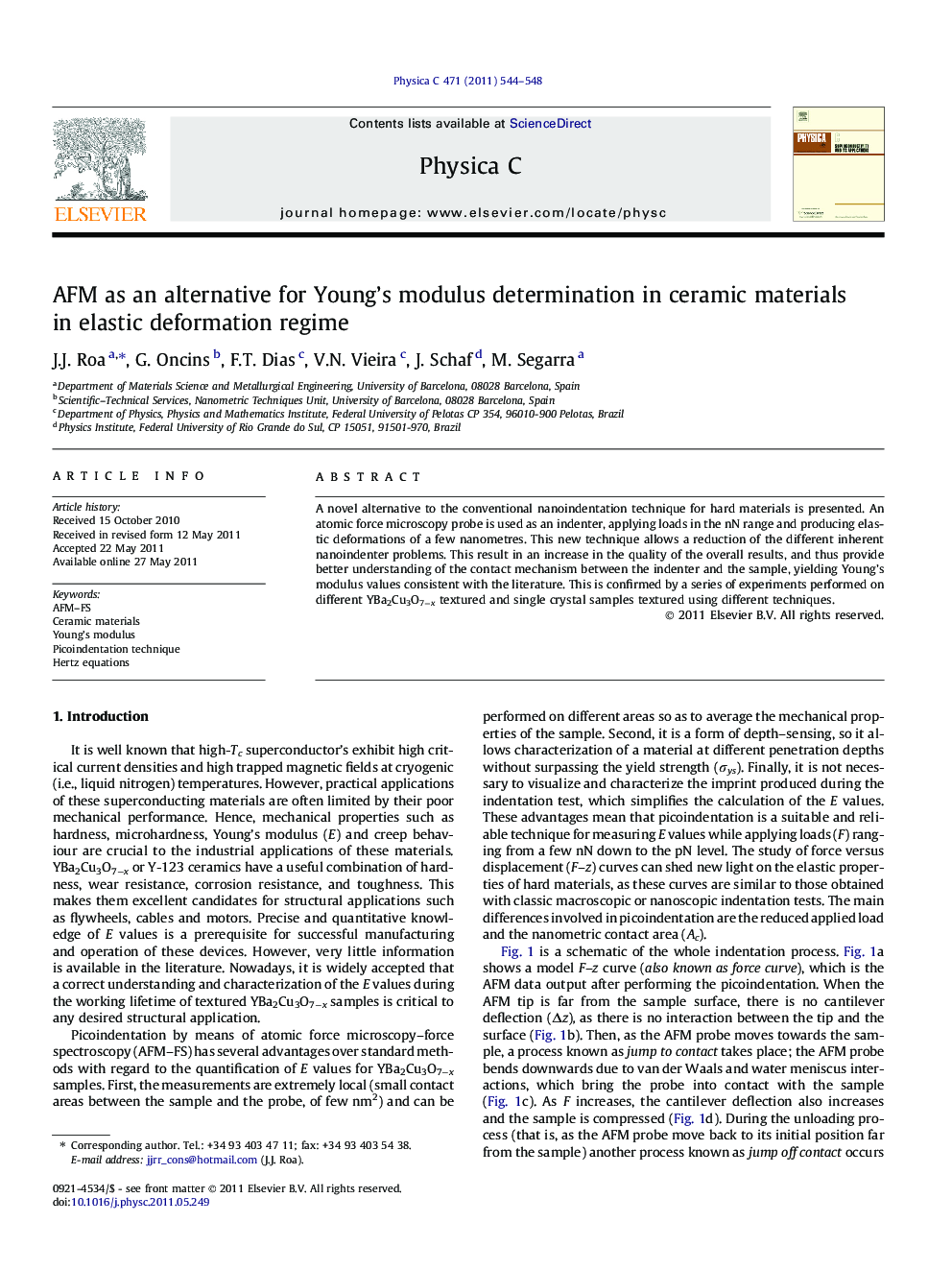| Article ID | Journal | Published Year | Pages | File Type |
|---|---|---|---|---|
| 1818501 | Physica C: Superconductivity and its Applications | 2011 | 5 Pages |
A novel alternative to the conventional nanoindentation technique for hard materials is presented. An atomic force microscopy probe is used as an indenter, applying loads in the nN range and producing elastic deformations of a few nanometres. This new technique allows a reduction of the different inherent nanoindenter problems. This result in an increase in the quality of the overall results, and thus provide better understanding of the contact mechanism between the indenter and the sample, yielding Young’s modulus values consistent with the literature. This is confirmed by a series of experiments performed on different YBa2Cu3O7−x textured and single crystal samples textured using different techniques.
► An atomic force microscopy probe is used as an indenter, applying loads in the nN range and producing elastic deformations. This result in an increase in the quality of the overall results, and thus provide better understanding of the contact mechanism between the indenter and the sample, yielding Young’s modulus values consistent with the literature.
